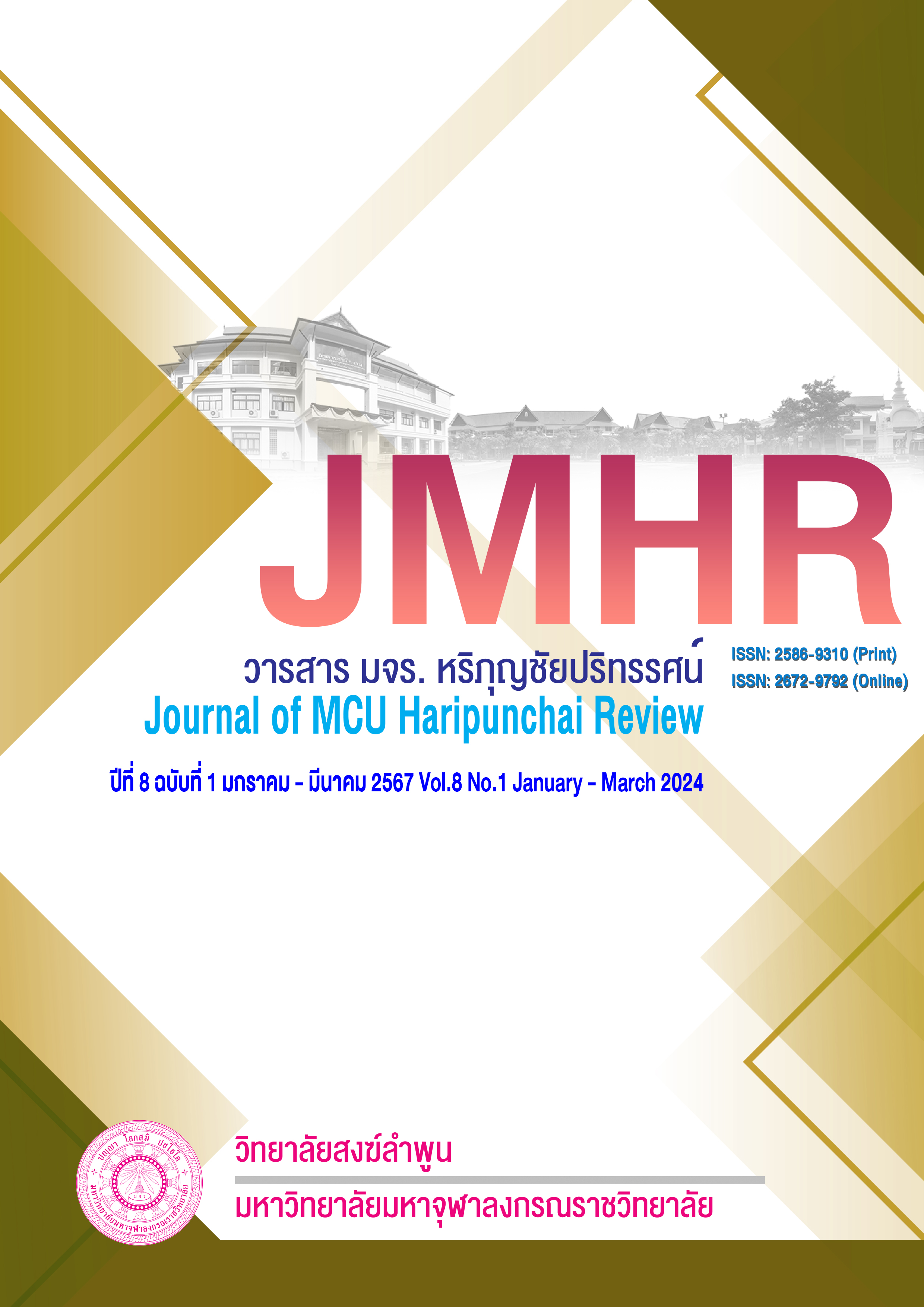Artificial Intelligence: Active Learning teaching with morality of teachers in Thai educational institutions.
Main Article Content
Abstract
From the development of technology in teaching and learning With Artificial Intelligence (AI), the study focuses on developing teaching and learning for students to have knowledge and abilities. The word Artificial Intelligence can be separated into two perspectives. View 1: A system that imitates humans. View 2: A system that has reason. Artificial intelligence is a machine that has many functions and the ability to understand. Learn various knowledge of humans is almost complete Artificial intelligence systems have been introduced into educational institutions in the teaching process using Active Learning, which is learning that creates interaction together. Provide opportunities for students to participate. Learners have hands-on experience through activities. Through learning media such as applying games as activities for students to create fun. and stimulates students to be alert to teachers and students together What artificial intelligence cannot imitate or do like humans is learning morality. Morality is goodness that is cultivated in the mind. It is Dhamma that controls physical, speech and mental behavior, knowing right and wrong. Fear of doing evil To stay within the framework of goodness Students in the era of educational reform What will make him a complete human being, both physically and mentally, and a human being of value to society in the future? Teachers must include the topic of "morality" so that students do not go astray. Students are like pure white cloth. Receive both physical and mental training. Grow up to be a complete human being. It is an important mechanism for driving the country forward
Article Details

This work is licensed under a Creative Commons Attribution-NonCommercial-NoDerivatives 4.0 International License.
References
จันทกานต์ ไพรศรี, สรพล จิระสวัสดิ์ และสุขุม เฉลยทรัพย์.(2561). การใช้บทบาทสมมติในการสอนเพื่อพัฒนาทักษะการพูดภาษาอังกฤษของนักเรียนชั้นมัธยมศึกษาปีที่ 5. วารสารบัณฑิตวิทยาลัย มหาวิทยาลัยสวนดุสิต, 14(3), 267-275.
กิตติชัย สุธาสิโนบล. (2558) การจัดการเรียนการสอนแบบพุทธะเพื่อพัฒนาคุณธรรมจริยธรรมสำหรับนักเรียน, กรุงเทพมหานคร: บริษัทคอมเมอร์เชียลเวิลด์ มิเดีย จำกัด.
วิทยา ทองดี. (2561). การพัฒนารูปแบบการจัดกิจกรรมการเรียนรู้เชิงพุทธ กลุ่มสาระการเรียนรู้สังคมศึกษา ศาสนาและวัฒนธรรม. รายงานวิจัย. มหาวิทยาลัยมหาจุฬาลงกรณราชวิทยาลัย.
พรรณ เทพสุเมธานนท์ และนุชนารถ สุนทรพันธุ์. (2537). การศึกษาเพื่อพัฒนาชีวิตและสังคม (พิมพ์ครั้งที่ 2). กรุงเทพมหานคร : สำนักพิมพ์มหาวิทยาลัยรามคำแหง.
พระธรรมปิฎก (ป.อ. ปยุตโต). (2541). พจนานุกรมพุทธศาสตร์ ฉบับประมวลธรรม. กรุงเทพมหานคร: สหธรรมิก.
พระพรหมคุณาภรณ์ (ป.อ. ปยุตฺโต. (2551). พจนานุกรมพุทธศาสน์ ฉบับประมวลศัพท์ (ชําระ-เพิ่มเติม ช่วงที่ 1). พิมพ์ครั้งที่ 12. กรุงเทพมหานคร : มหาวิทยาลัยมหาจุฬาลงกรณราชวิทยาลัย, หน้า 252-253.
พระวิจิตรธรรมาภรณ์. (2558) ความหมายของคุณธรรม. เข้าถึงเมื่อ 20 ตุลาคม 2566, เข้าถึงได้จาก http://portal.tebyan.net/ Portal/Cultcure/
วารินท์พร ฟันเฟื่องฟู. (2562). การจัดการเรียนรู้ Active Learning ให้สำเร็จ. วารสารวไลยอลงกรณ์ปริทัศน์. (มนุษยศาสตร์และสังคมศาสตร์), 9(1), 135-145.
วิลาสลักษณ์ ชัววัลลี. (2552) จริยธรรมในเด็กและเยาวชน. วารสารพฤติกรรมศาสตร์. 15 (1),
ศศิภา ไชยวงศ์. (2553). การใช้การสอนแบบชักชวนร่วมกับกิจกรรมบทบาทสมมุติเพื่อเพิ่มพูนการฟังพูดภาษาอังกฤษเพื่อการสื่อสารและลดความวิตกกังวลของนักเรียนในชมรมมัคคุเทศก์น้อย.วิทยานิพนธ์ศึกษาศาสตรมหาบัณฑิต. มหาวิทยาลัยเชียงใหม่, เชียงใหม่.
สถาพร พฤฑฒิกุล. (2558) การบริหารการศึกษากับการเปลี่ยนแปลงในศตวรรษที่ 21. วารสารศึกษาศาสตร์ มหาวิทยาลัยบูรพา.
สมเด็จพระพุทธโฆษาจารย์. (ป.อ. ปยุตฺโต). (2559) พจนานุกรมพุทธศาสน์ ฉบับประมวลศัพท์, กรุงเทพมหานคร : สำนักพิมพ์ผลิธัมม์.


